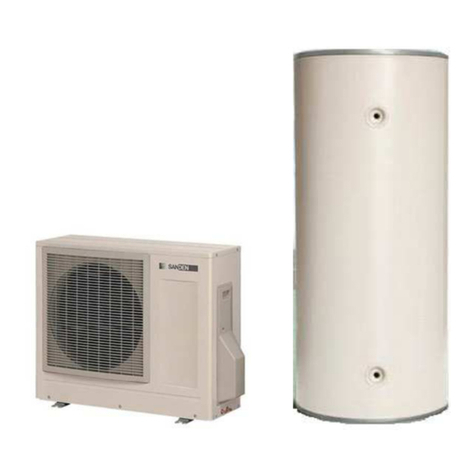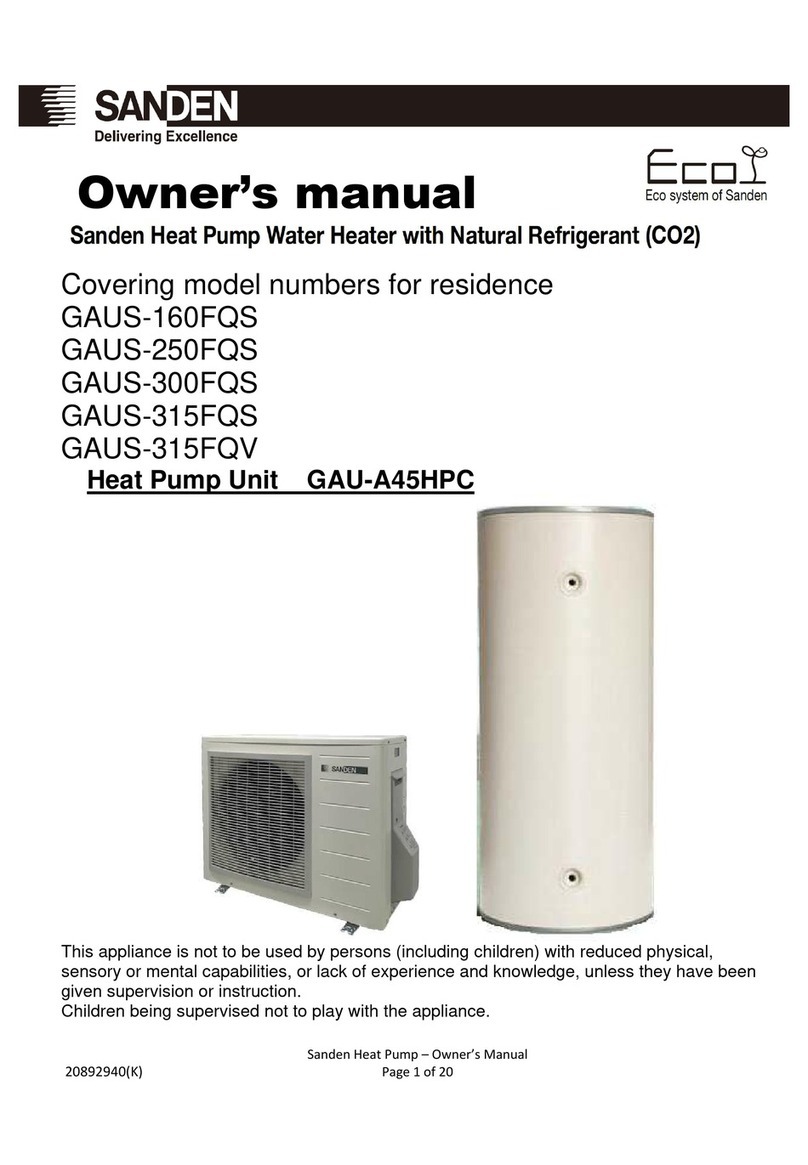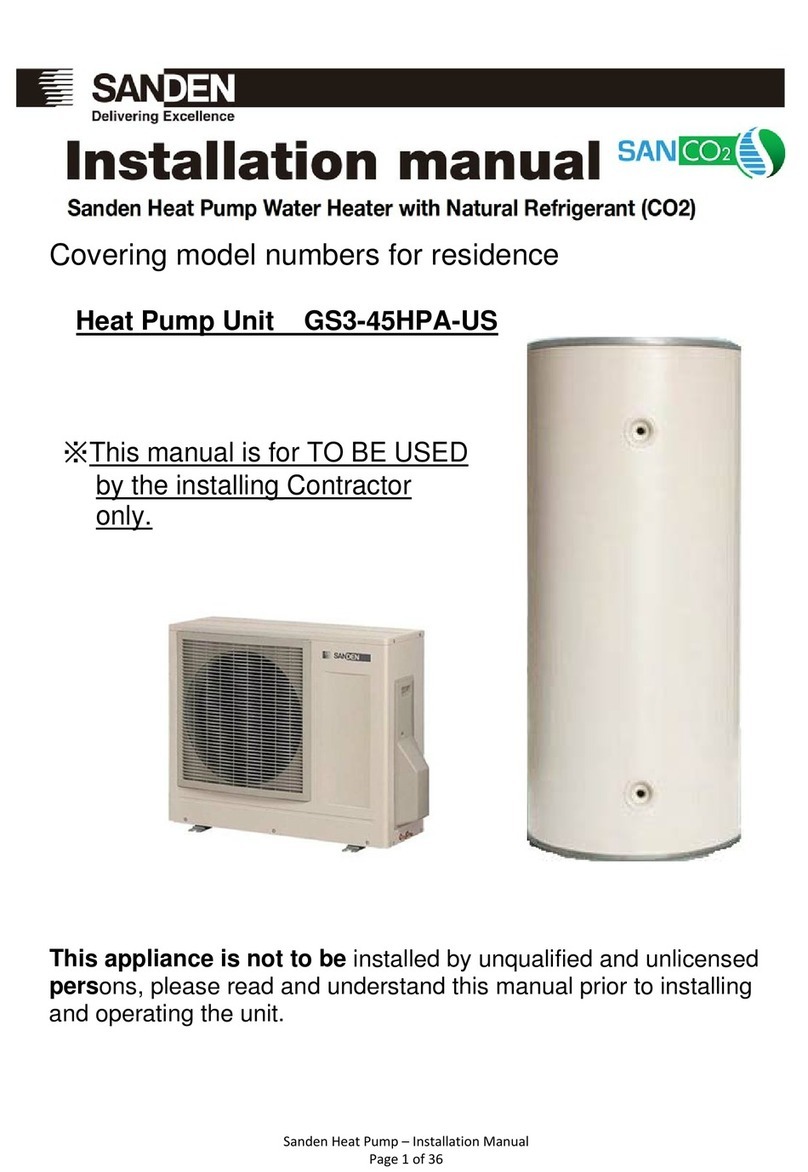SandenHeatPump–InstallationManual
Page2of26
Contents
Contents..............................................................................................................................................................................2
Introduction......................................................................................................................................................................3
Howitworks.....................................................................................................................................................................3
Installationdetails..........................................................................................................................................................4
Installationlocation.......................................................................................................................................................5
Powerrequirement........................................................................................................................................................6
PipingConnections........................................................................................................................................................7
Heatpumpunitpiping..................................................................................................................................................8
Removingairfromthesystem..................................................................................................................................9
Freezeprotection.........................................................................................................................................................10
Electricalconnections................................................................................................................................................11
Systemoperationoutlinecontinuouspower..................................................................................................11
Systemoperationifconnectedtooff‐peakelectricity.................................................................................11
Howtoconnecttankunitthermistorcable......................................................................................................13
Timesettingandblockouttimesetting............................................................................................................14
Blockouttimesettingmode....................................................................................................................................15
MaintenanceMode......................................................................................................................................................16
HowtoswitchtoMaintenanceMode..................................................................................................................16
ErrorCodes....................................................................................................................................................................17
Changeofwatersupply.............................................................................................................................................19
Dimensionsandtechnicaldata..............................................................................................................................20
WarrantyPolicy............................................................................................................................................................23
WarrantyPeriod..........................................................................................................................................................24
Postinstallationinspectionchecklist.................................................................................................................24
Checksheet.....................................................................................................................................................................25
Memo.................................................................................................................................................................................26
Warranty.........................................................................................................................................................................25
PATENTS
This water heater may be protected by one or more patents or registered designs
in the name of Sanden Australia Pty Ltd
TRADE MARKS
® Registered trademark of Sanden Australia Pty Ltd
.
Note: Every care has been taken to ensure accuracy in preparation of this publication.
No liability can be accepted for any consequences that may arise as a result of its application


































